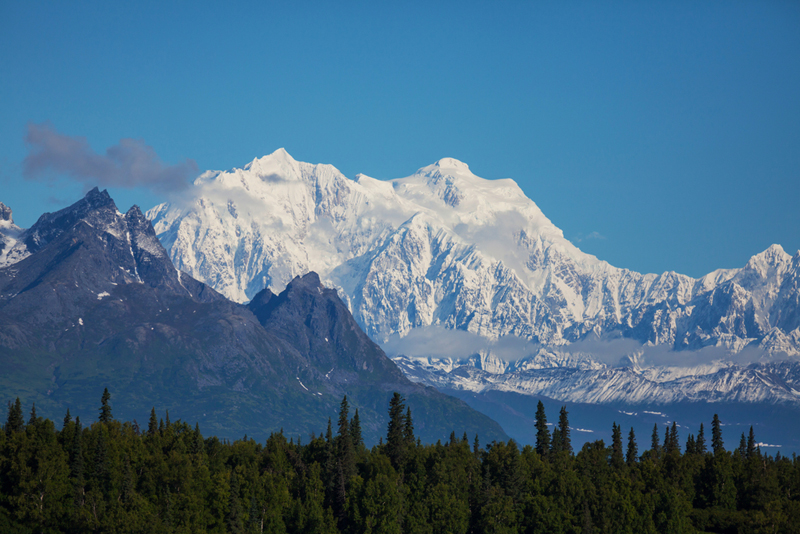Why 'Denali?' Explaining Mount McKinley's New (Old) Name

North America's tallest mountain peak just got a new name. Or, more accurately, the mountain formerly known as Mount McKinley just got its old name back.
On Sunday (Aug. 30), during a trip to Alaska, President Obama said the name of the state's 20,237-foot (6,168 meters) mountain would officially be changed to Denali, which is what many Alaskans have called the peak all along.
The word "Denali" is derived from Koyukon, one of the 11 Athabascan languages traditionally spoken in Alaska. In the Koyukon language, the word for the mountain is "Deenaalee," and at least five other Athabascan languages have similar names for the Alaska Range's highest peak (though these names are pronounced differently), said James Kari, professor emeritus of linguistics at University of Alaska Fairbanks and a specialist in Athabascan languages. [Photos: The World's Tallest Mountains]
"Then you have 'Denali', which is the Anglicization of the Koyukon name," Kari told Live Science. The name translates to "the tall one," and is derived from the Koyukon verb that means, "to be long or tall," he added.
But the Denali name isn't just descriptive; it's also ancient. Like many of the original place names derived from Athabascan languages, derivatives of "Deenaalee" may have been used by native Alaskans as early as 10,000 to 12,000 years ago, Kari said. Variations of the name also appear on the earliest known maps of Alaska and were recorded (though often misspelled) by the first American geologists to explore the region, in the 19th century, he added.
In the grand scheme of history, the peak's once-official name of Mount McKinley was fairly short lived. In 1896, an ardent political supporter of then-presidential candidate William McKinley started calling the mountain Mount McKinley. The name was formally recognized by an act of Congress in 1917, long after McKinley's assassination in 1901. But in 1980, Congress named the area surrounding the peak Denali National Park and Preserve.
For nearly 100 years, the name Mount McKinley appeared on federal maps and official documents. But many people never called the mountain by this name, said Kari, who added that the name Denali has long been used by both native and non-native Alaskans.
Sign up for the Live Science daily newsletter now
Get the world’s most fascinating discoveries delivered straight to your inbox.
In 1975, the Alaska State Legislature filed a request with the United States Board on Geographic Names to officially rename the mountain Denali, but congressmen from McKinley's home state of Ohio blocked the measure. This same scenario has played out on an almost yearly basis in Washington, D.C., with Alaska legislators requesting a name change and Ohio legislators refuting the request.
This week's renaming of the mountain came about because U.S. Interior Secretary Sally Jewell, with the approval of President Obama, signed a secretarial order that bypassed the legislative filibuster and granted the name change requested by Alaska's state representatives.
"[The name change] is interesting and important on many levels," said Kari, who noted that the legislative fight over the name of the mountain was just a "low-stakes political cat fight," whereas restoring the mountain's native name was an issue that many Alaskans were truly passionate about.
But Kari said, as an academic, he's most excited that the public may now learn more about the Athabascan system of naming places and geographical structures. The rule-driven naming system is highly functional, he said, designed to make travel in the region more intuitive. For instance, a river, its tributaries and the river mouth will all have part of their names in common, so that people know the different bodies are related to one another.
The renaming of Denali is a sign that Alaskans continue to claim this system as their own, said Kari, who added that Alaskans are also preserving native names in new ways. For example, the Anchorage convention hall in which President Obama announced Denali's name change is called the Dena'ina Center and is named for an Athabascan ethno-linguistic group from the Anchorage area. The five largest rooms in the building aren't named for former presidents or anyone else — they're named for Dena'ina villages.
Follow Elizabeth Palermo @techEpalermo. Follow Live Science @livescience, Facebook & Google+. Original article on Live Science.

Elizabeth is a former Live Science associate editor and current director of audience development at the Chamber of Commerce. She graduated with a bachelor of arts degree from George Washington University. Elizabeth has traveled throughout the Americas, studying political systems and indigenous cultures and teaching English to students of all ages.









